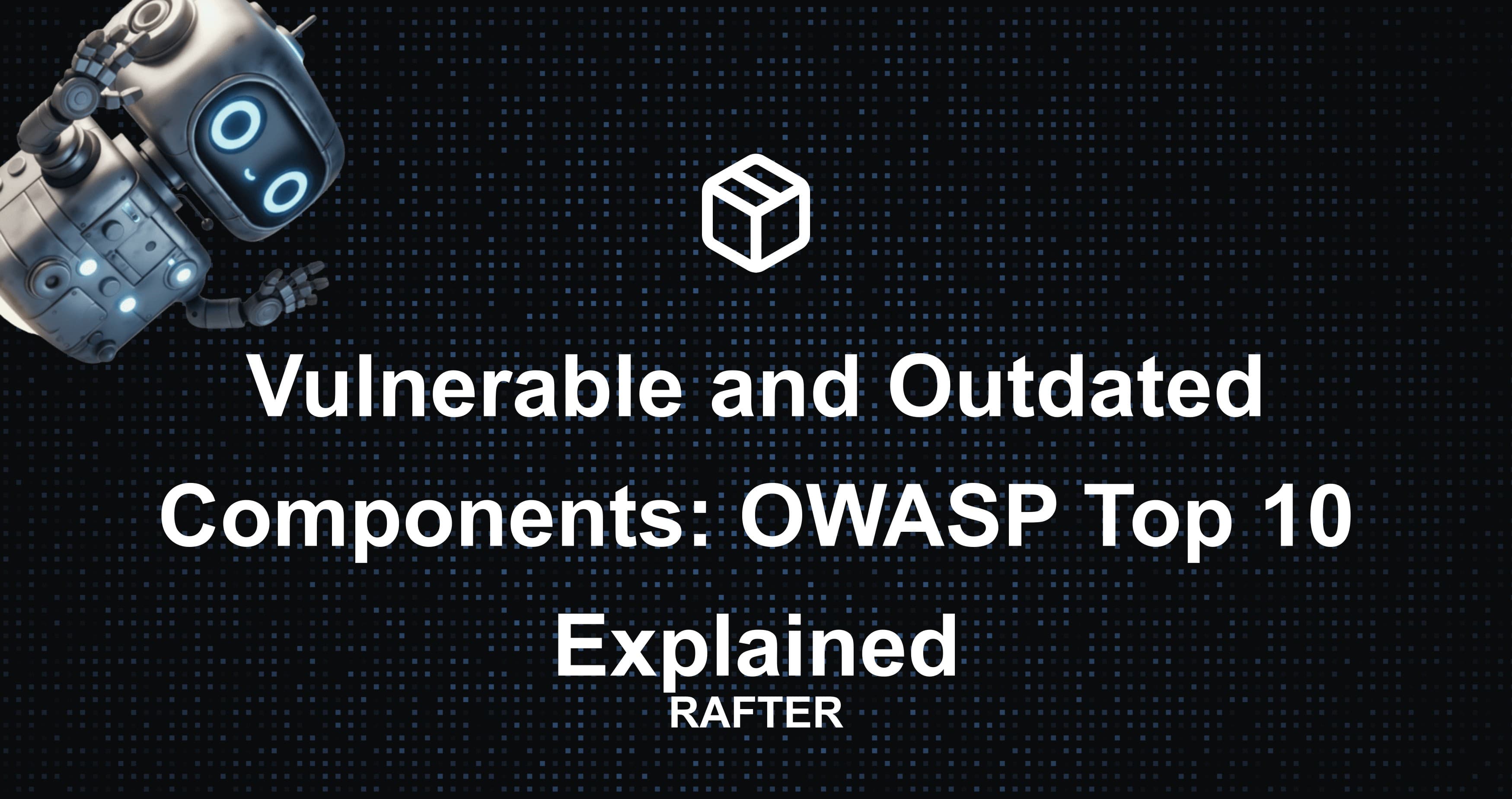
10/7/2025 • 4 min read
Vulnerable and Outdated Components: OWASP Top 10 Explained
Estimated reading time: ~9 minutes
Hook
Log4j (2021) showed the world how a single outdated library can bring down entire industries.
The vulnerability affected millions of applications worldwide, from small startups to Fortune 500 companies, demonstrating the critical importance of dependency management.
The Problem
Log4j (2021) showed the world how a single outdated library can bring down entire industries.
The vulnerability affected millions of applications worldwide, from small startups to Fortune 500 companies, demonstrating the critical importance of dependency management. This is why Vulnerable and Outdated Components remains a critical category in the OWASP Top 10.
What It Is
Using libraries, frameworks, or dependencies with known CVEs (Common Vulnerabilities and Exposures). This includes:
- Outdated Libraries: Components with known security vulnerabilities
- Unpatched Dependencies: Libraries that haven't been updated to fix security issues
- Transitive Dependencies: Vulnerable libraries pulled in by other dependencies
- Supply Chain Risks: Compromised or malicious packages
Types of Vulnerable Components
- Direct Dependencies: Libraries you explicitly install
- Transitive Dependencies: Dependencies of your dependencies
- Development Dependencies: Tools used during development
- Runtime Dependencies: Libraries used in production
Why It Matters
Third-Party Code = Attack Surface
- Widespread Impact: A single vulnerable library can affect thousands of applications
- Supply Chain Attacks: Malicious packages can compromise entire ecosystems
- Automated Exploitation: Attackers use tools to scan for known vulnerabilities
- Compliance Requirements: Many standards require vulnerability management
Business Impact
- Data Breaches: Vulnerable components can lead to system compromise
- Regulatory Fines: GDPR, PCI DSS violations for inadequate security
- Reputation Damage: Public disclosure of vulnerabilities
- Operational Disruption: Emergency patching and system downtime
Real-World Examples
Log4j (CVE-2021-44228) - December 2021
- Impact: Remote code execution vulnerability
- Scope: Affected millions of Java applications worldwide
- Response: Emergency patching across industries
- Lesson: Even widely-used, trusted libraries can have critical vulnerabilities
Equifax (2017) - Apache Struts
- Impact: 147 million people's data compromised
- Cause: Unpatched Apache Struts vulnerability (CVE-2017-5638)
- Cost: $1.4 billion in settlements and fines
- Lesson: Failure to patch known vulnerabilities
Related: This incident also involved Security Logging and Monitoring Failures — the breach went undetected for months.
SolarWinds (2020) - Supply Chain Attack
- Impact: Compromised 18,000+ organizations
- Cause: Malicious code injected into legitimate software updates
- Scope: Government agencies and Fortune 500 companies
- Lesson: Supply chain integrity is critical
How to Prevent It
1. Run Dependency Scans Regularly
# Node.js
npm audit
npm audit fix
# Python
pip-audit
pip install --upgrade package-name
# Java/Maven
mvn org.owasp:dependency-check-maven:check
# .NET
dotnet list package --vulnerable
2. Maintain a Software Bill of Materials (SBOM)
{
"bomFormat": "CycloneDX",
"specVersion": "1.4",
"version": 1,
"metadata": {
"timestamp": "2025-01-16T10:00:00Z",
"tools": [
{
"vendor": "OWASP",
"name": "dependency-check",
"version": "8.4.0"
}
]
},
"components": [
{
"type": "library",
"name": "lodash",
"version": "4.17.21",
"purl": "pkg:npm/lodash@4.17.21"
}
]
}
3. Update Dependencies Regularly
- Automated Updates: Use tools like Dependabot or Renovate
- Testing: Test updates in staging before production
- Rollback Plans: Have procedures to revert problematic updates
- Monitoring: Track which dependencies are outdated
4. Use Tools Like Rafter
- Rafter: Comprehensive security scanning including dependency analysis
- OWASP Dependency Check: Open-source vulnerability scanner
- Snyk: Commercial dependency scanning platform
- GitHub Dependabot: Automated dependency updates
5. Implement Security Policies
# Example security policy
dependencies:
allowed_sources:
- npmjs.org
- pypi.org
- maven central
prohibited_patterns:
- "*test*"
- "*debug*"
vulnerability_threshold:
critical: 0
high: 0
medium: 5
low: 10
6. Monitor Security Advisories
- Subscribe to security mailing lists
- Monitor CVE databases
- Follow vendor security bulletins
- Use automated alerting systems
7. Implement Supply Chain Security
- Verify package integrity
- Use package signing
- Implement code signing
- Monitor for suspicious package behavior
Tools
- Rafter: Comprehensive security scanning
- npm audit: Node.js dependency scanning
- pip-audit: Python vulnerability scanner
- OWASP Dependency Check: Multi-language vulnerability scanner
- Snyk: Commercial dependency and container scanning
- GitHub Dependabot: Automated dependency updates
- Renovate: Open-source dependency update automation
Conclusion
Your app is only as secure as its least-secure dependency. Implement proper dependency management, regular scanning, and automated updates to protect against vulnerable components.
Next Steps:
- Audit your current dependencies for known vulnerabilities
- Set up automated dependency updates
- Run a Rafter scan to identify vulnerable dependencies in your project